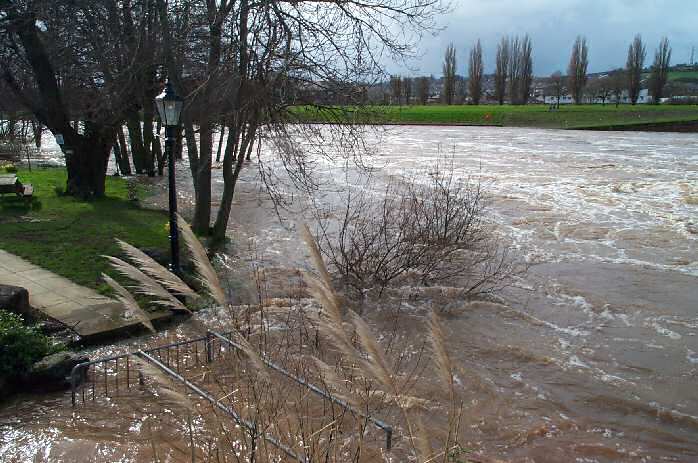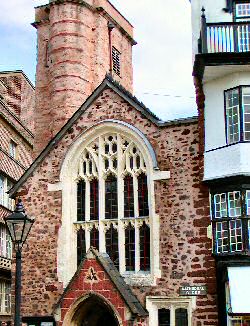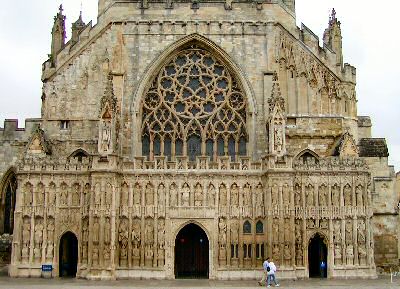| |
Exeter |
The Normans soon improved the defences building a ring
motte and bailey castle on a hill, the rouge mont, in the eastern corner
of the city wall. The castle was little used and much was pulled down
over the years but the fine Norman gatehouse remains at the entrance
to Rougemont Gardens in Castle Street. Within the gardens can be seen
other parts of the castle walls, including Athelstan's tower originally
built during the 10th century to help strengthen the castle's fortifications.
The site of Exeter Cathedral and the area around about has been the
heart of Exeter since the earliest days with the the Roman garrison's
bath-house being situated in Cathedral Close. The Cathedral area became
a centre of worship in Saxon times with evidence of Saxon Christian
burials in Cathedral Yard on the grassy area close to the Devon War
Memorial. A minster or monastry was established in the late 7th century
has been found in the same area and St Boniface was educated at the
minster in AD 680. The Cathedral was begun in the 11th century, but
most of what we see today is the result of rebuilding between 1275-1375
with the wonderful West Front being built by Bishop John Grandisson
in 1342. Today, Exeter Cathedral is well worth visiting with one of
the longest unbroken stretch of Gothic stone vaulting in the world and
a clock in the North Transept that dates from 1376. |
| The English War saw the city suffering much damage first defending itself the Royalist side and then, after beingcaptured in 1643, against the Parliamentary side. The city was re-captured in 1646 leaving much of the suburbs laid waste. Much re-buliding took place during the 1650's and by 1660, at the Restoration of Charles II, the city had recovered. It continued to prosper with the flourishing Devon cloth industry exporting much of the cloth to the Netherlands and by 1730 it had reached the summit of its prosperity. However the Devon cloth industry went into decline with the growth of the great industrial towns of the Midlands and the North and by 1830 it was practically vanished. Exeter changed, becoming a county town with much rebuilding of the old medieval city especially towards the end of the Georgian era. Many parts of the city still faced huge problems of disease, especially cholera, throughout the Victorian period and much work was done in improving the water supply, sewers, street lighting and the provision of education to the city's children. Parts of the city remained slum areas until finally being cleared in the 1920's and 1930's. The Second World war saw heavy damage being inflicted in 1942 which led to much post-war rebuilding including the restoration of the Cathedral which suffered a direct hit. |
 |

